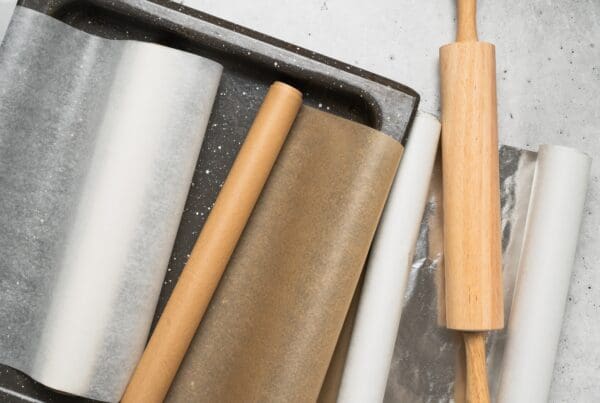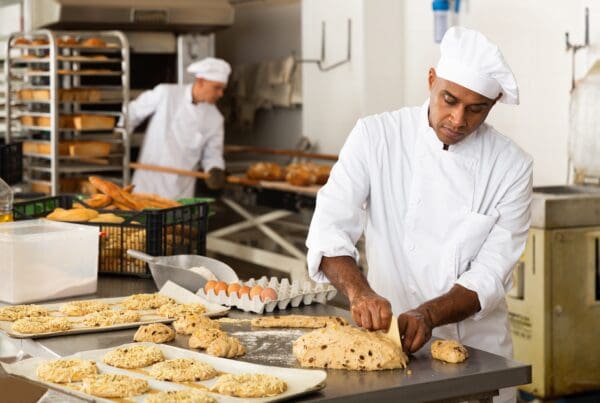While the common view is that baking and healthy eating don’t mix, we have learned that baking doesn’t have to be bad for you, and healthier baking doesn’t have to taste, or look, terrible. With a few tweaks, an eye on portion control and a sense of occasion, it’s possible for all of us to enjoy home baking as part of a balanced diet.
1. Make your own bread to use less salt
Bread is probably the bakery product we eat the most. While it may not be the saltiest food, it still makes a significant contribution to the salt content of our diet. In recent years, many manufacturers have cut the amount of salt they add to bread, yet levels still vary widely. A recent survey by Consensus Action on Salt and Health found one in four loaves had more salt in two slices than a packet of crisps. Check food labels carefully, or bake your own bread for full control.
2. Try different flour and flavourings
Making your own bread also gives you flexibility in terms of the type of flour you use. Wholegrain flour is a healthier choice than white, but it doesn’t have to be just wheat – you could try spelt, barley or oat, either on their own or mixed. Add some seeds or herbs to give an interesting crunch and flavour.
3. Make a quick soda bread
If all the kneading and waiting associated with a yeasted loaf sounds like too much effort, try our wholemeal soda bread flavoured with caraway seeds. You use bicarbonate of soda as the raising agent instead of yeast, so it needs to be eaten fresh, but it’s quick and easy to make. It’s delicious served with soup at lunchtime or a boiled or poached egg for breakfast.
4. Bake with unsaturated fat
Cakes should really be an ‘every now and then’ food. However, with a few tweaks to the ingredients and toppings, baking your own can be better for you than buying them.
Using an unsaturated spread instead of butter has more benefits than simply reducing the amount of saturated fat: it actually gives a lighter texture, especially if you’re making an all-in-one sponge cake. You can just swap spreads for butter in most recipes without making any other changes. Just make sure the spread you use is suitable for baking.
If you’re reluctant to use a spread, then oil is a good alternative. It can make cakes lovely and moist, but as it’s a liquid it will alter the balance of the mix, so find recipes that are specifically designed to use oil.
5. Add healthier ingredients to your baking
As with bread, choosing wholegrain flour instead of white flour increases fibre and makes baking more filling. The flavour shifts slightly, often described as nutty. For a milder taste, combine half wholegrain with half white flour.
Adding fruit and vegetables also boosts fibre and natural sweetness. A single portion may not count as one of your 5-a-day, but it still helps keep cakes and scones moist. Sweet vegetables such as carrots, beetroots, or courgettes cut the need for added sugar. Fruits like apples, berries, or pineapples add sweetness while preserving texture.
6. Healthier icings
Use a drizzle of glacé (water) icing instead of butter icing for cake toppings. A light sprinkle of icing sugar may also be enough to finish your bake. For a professional touch, cut stencils from greaseproof paper. Then sift icing sugar over them to create a decorative finish.
7. Watch your portion sizes
Think about portion sizes too. Making ‘mini’ versions gives all the flavour but with less fat and fewer calories per portion. Tray bakes, such as our carrot cake recipe, are also versatile. They can be cut easily into smaller squares for sharing.
8. Choose the right pastry
Pastry isn’t usually considered heart-healthy, but fat content varies by type and ingredients. Puff and shortcrust pastry contain about one-third fat. Pastries made with butter or palm oil carry more saturated fat, while those using unsaturated fats such as sunflower spread contain less. These types remain popular, but you should ideally enjoy them only as an occasional treat.
Not every pastry is high in fat. The filo pastry in our spiced butternut squash tart recipe contains just 3.1g of fat per 100g and stays low in saturated fat. Filo offers a different texture from shortcrust or flaky pastry and requires different handling. Still, it delivers a crisp crust and creates an impressive finish in small savoury or sweet tarts.
9. …and don’t use too much
Try just putting a top crust on your pies, rather than lining the entire dish, to help to cut down on the saturated fat and calories. You can also bake discs of pastry and put them on top of a filling you have cooked separately.
10. A little of what you fancy
As long as you don’t tuck into cream cakes every weekday, there’s no harm in occasional indulgence. A healthy diet is about balance. When you stick to healthy eating most of the time, you can still enjoy cakes guilt-free. Pastries and biscuits can also be enjoyed in moderation.
More information about Linwood Raker can be found at www.linwoodraker.co.uk
Want to try Food Paper? Request your trial here




